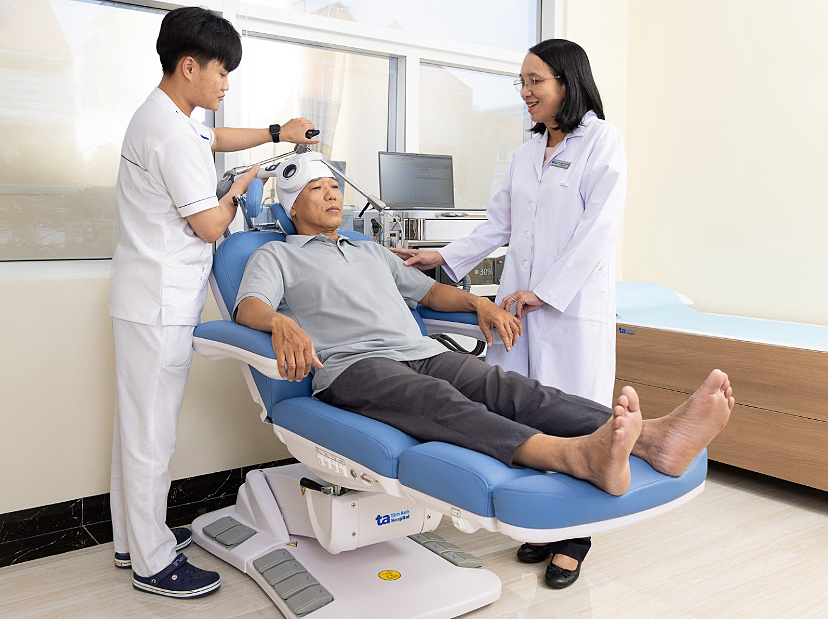Answer:
Headaches with accompanying eye pain can occur when the body is tired, stressed, sleep-deprived, or overworked, causing a dull ache in the eye sockets, temples, or back of the neck. If this happens repeatedly for several days and is accompanied by other unusual symptoms, it could be a sign of a more serious condition.
Your symptoms suggest you may have migraines. When the pain persists continuously for two weeks, it might have transitioned into chronic migraine. Migraine symptoms include a severe throbbing pain, occurring in episodes on one side of the head, accompanied by pain around the eyes and temples, sometimes spreading to the face, jaw, or neck. Nausea, sensitivity to light and sound are also common. The pain often flares up at the end of the day and can be triggered by changes in weather or prolonged psychological stress.
 |
A patient undergoing transcranial magnetic stimulation therapy for headaches. Photo: Tam Anh General Hospital |
A patient undergoing transcranial magnetic stimulation therapy for headaches. Photo: Tam Anh General Hospital
In some cases, sinusitis can cause headaches and eye pain, along with pressure and pain in the forehead, nose, and temples, accompanied by nasal congestion, fever, and fatigue. Brain tumors can increase intracranial pressure, compressing nerves and causing one-sided headaches with eye pain, blurred vision, or double vision. Conditions such as glaucoma, temporal arteritis, cerebral vascular malformations, or cavernous sinus arteriovenous fistulas can also manifest as headaches accompanied by visual disturbances.
If your headache is accompanied by dizziness, blurred vision, weakness on one side of the body, difficulty speaking, or nausea, you should seek immediate medical attention for diagnosis and timely treatment. Depending on your condition, the doctor may order blood tests, MRI, CT scans, or other imaging techniques to determine the exact cause and recommend appropriate treatment.
If the headaches are due to chronic migraine or neurological disorders, transcranial magnetic stimulation (TMS) may be a treatment option. This technology uses magnetic fields to regulate the activity of brain regions associated with pain sensation, helping to alleviate headaches.
In addition to following your doctor's treatment plan, you should maintain a healthy lifestyle, including 7-8 hours of sleep per night, adequate hydration, and limited caffeine and alcohol intake. A diet rich in omega-3 fatty acids, B vitamins, and natural nutrients from blueberries and ginkgo biloba can combat free radicals that contribute to headaches and insomnia. Avoid overworking and allow time for relaxation and rest to reduce stress on the brain.
Dr. Nguyen Huu Khanh
Center for Neuroscience
Tam Anh General Hospital, TP HCM
| Readers can submit questions about neurological conditions here for doctors to answer. |












